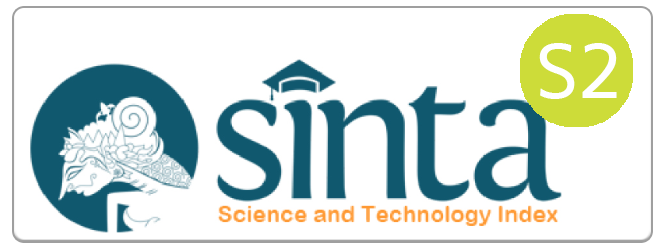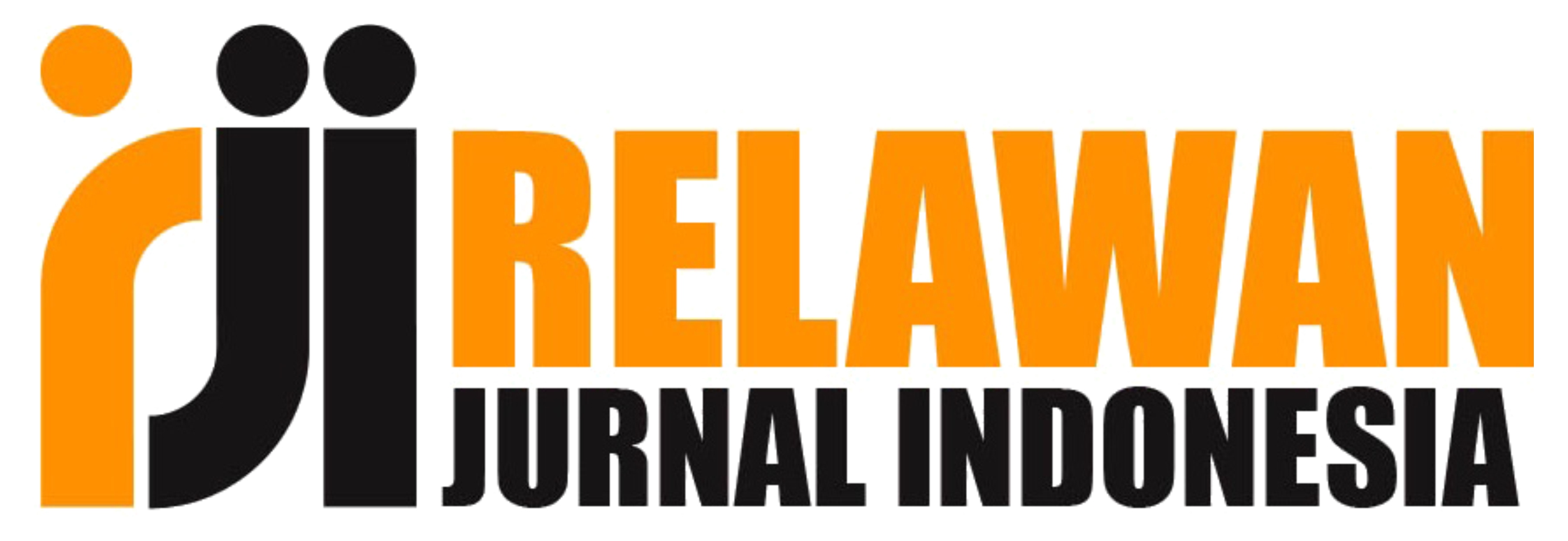Towards a Greener Future: Using DEMATEL-ANP for Sustainable Indonesian Fiber Cement Board Manufacturing Company
Abstract
Keywords
Full Text:
PDFReferences
Akasah, Z. A., H., Dullah, N. M. Z., & Soh, N. A. G. (2021). Physical and mechanical properties of empty fruit bunch fibre-cement bonded fibreboard for sustainable retrofit building. Journal of Materials Science & Engineering, 7(1), 1-9. https://doi.org/10.17706/IJMSE.2021.7.1.1-9
Alanbari, R. H., Hassan, M. S., & Fakhri, A. H. (2015). Manufacturing of sustainable cellulose date palm fiber reinforced cementitious boards in Iraq. Engineering and Technology Journal.
Asif, F., Raheem, A., & Saeed, S. (2021). Impact of sustainable materials on environmental performance: A review. Journal of Cleaner Production, 289, 125626. https://doi.org/10.1016/j.jclepro.2021.125626
Babu, P., Srinivas, K., & Chari, V. (2021). Enhancing the mechanical properties of cement boards using bio-based additives. Construction and Building Materials, 298, 123570. https://doi.org/10.1016/j.conbuildmat.2021.123570
César, A., Juárez-Alvarado, C., Magniont, G., Escadeillas, B., Terán-Torres, F., Rosas-Díaz, P.L., & Valdez-Tamez, P.L. (2022). Sustainable proposal for plant-based cementitious composites: Evaluation of their mechanical, durability, and comfort properties. Sustainability, 14(21), 14397. https://doi.org/10.3390/su142114397
Daily, B. F., Bishop, J. W., & Massoud, J. A. (2007). The role of training and empowerment in environmental performance: A study of the Mexican maquiladora industry. International Journal of Operations & Production Management, 27(5), 583-601. https://doi.org/10.1108/01443570710742392
Drexhage, J., & Murphy, D. (2010). Sustainable development: From Brundtland to Rio 2012. United Nations.
Fikru, M. G. (2018). Firms' compliance to environmental regulations and their performance: A study on African firms. Journal of Cleaner Production, 197, 1561-1571. https://doi.org/10.1016/j.jclepro.2018.06.167
Ghisellini, P., Cialani, C., & Ulgiati, S. (2020). A review on circular economy: The expected transition to a balanced interplay of environmental and economic systems. Journal of Cleaner Production, 254, 119994. https://doi.org/10.1016/j.jclepro.2020.119994
Hsu, C. C., & Sandford, B. A. (2021). The Delphi technique: Making sense of consensus in Delphi studies. Practical Assessment, Research & Evaluation, 26(10), 1-9. https://doi.org/10.7275/q7qv-4g18
International Energy Agency (IEA). (2020). Energy Efficiency 2020. International Energy Agency. https://www.iea.org/reports/energy-efficiency-2020
Jena, M. C., Mishra, S. K., & Moharana, H. S. (2023). A study on optimum use of fly ash and GGBS in fiber cement sheet to enhance sustainable manufacturing. Environmental Claims Journal, 34(2), 125-138. https://doi.org/10.1080/10406026.2023.2282511
Kesidou, E., & Demirel, P. (2022). Green innovation and competitive advantage: The role of stakeholder engagement. Business Strategy and the Environment, 31(1), 10-22. https://doi.org/10.1002/bse.2883
Kumar, R., Singh, J., & Patel, A. (2022). Energy-efficient kiln technologies for cement production. Journal of Sustainable Cement-Based Materials, 11(3), 167-182. https://doi.org/10.1080/21650373.2022.1974162
Makul, N. (2020). Modern sustainable cement and concrete composites: Review of current status, challenges and guidelines. Sustainable Materials and Technologies, 25, e00155. https://doi.org/10.1016/j.susmat.2020.e00155
Mishra, A., Sharma, S., & Kumar, R. (2023). Advances in sustainable cement production: A review. Materials Today: Proceedings, 49(3), 1456-1462. https://doi.org/10.1016/j.matpr.2023.01.123
Misran, H., Usman, F., & Rauf, A. (2021). Environmental and social sustainability in the cement industry: A case study of XYZ Cement Plant. Sustainability, 13(5), 2863. https://doi.org/10.3390/su13052863
Ojo, E., Okwu, M. O., Edomwonyi-Otu, L. C., & Oyawale, F. A. (2019). Initial assessment of reuse of sustainable wastes for fibreboard production: The case of waste paper and water hyacinth. Journal of Material Cycles and Waste Management. https://doi.org/10.1007/S10163-019-00871-Z
Ottman, J. A., Stafford, E. R., & Hartman, C. L. (2006). Avoiding green marketing myopia: Ways to improve consumer appeal for environmentally preferable products. Environment: Science and Policy for Sustainable Development, 48(5), 22-36. https://doi.org/10.3200/ENVT.48.5.22-36
Raj, P., Bhardwaj, A., & Verma, M. (2021). Lifecycle assessment models for cement board manufacturing processes. Journal of Cleaner Production, 287, 125602. https://doi.org/10.1016/j.jclepro.2021.125602
Sadrolodabaee, P., Hosseini, S. M. A., Claramunt, J., Raso, M. A., Ibarra, L. H., Palacio, A. M. L., … & Antequera, A. d. l. F. (2022). Experimental characterization of comfort performance parameters and multi-criteria sustainability assessment of recycled textile-reinforced cement facade cladding. Journal of Cleaner Production, 356, 131900. https://doi.org/10.1016/j.jclepro.2022.131900
Seneviratne, D., Jayasekara, C., & Wickramasinghe, D. (2022). Use of nano-materials to improve sustainability of cement boards. Construction and Building Materials, 302, 124564. https://doi.org/10.1016/j.conbuildmat.2022.124564
Singh, P., & Joseph, S. (2019). Wastewater recycling: A review of treatment technologies and their sustainability assessment. Journal of Cleaner Production, 211, 83-92. https://doi.org/10.1016/j.jclepro.2018.11.079
Tseng, M. L., Tan, R. R., Chiu, A. S. F., Chien, C. F., & Kuo, T. C. (2018). Circular economy meets industry 4.0: Can big data drive industrial symbiosis? Resources, Conservation and Recycling, 131, 146-147. https://doi.org/10.1016/j.resconrec.2017.12.033
Wang, X., Chow, C. L., & Lau, D. (2024). Multiscale perspectives for advancing sustainability in fiber reinforced ultra-high performance concrete. npj Materials Sustainability. https://doi.org/10.1038/s44296-024-00021-z
Wu, Z., Li, Y., & Wang, X. (2022). DEMATEL-based analytical framework for sustainable decision-making in the cement industry. Journal of Industrial Ecology, 26(4), 879-893. https://doi.org/10.1111/jiec.13241
Xu, W., Wang, L., Zhuang, Q., et al. (2024). Management of products in the apparel manufacturing industry using DEMATEL-based analytical network process technique. Operations Management Research. https://doi-org.ezproxy.ugm.ac.id/10.1007/s12063-024-00500-5
Yazdani, M., Torkayesh, A. E., & Saen, R. F. (2021). An integrated DEMATEL-ANP approach for evaluating the performance of sustainable supply chain management. International Journal of Production Research, 59(6), 1834-1849. https://doi.org/10.1080/00207543.2021.1890267
DOI: http://dx.doi.org/10.56444/mem.v40i1.5343
Article Metrics
Abstract view : 0 timesPDF - 0 times
Refbacks
- There are currently no refbacks.
Copyright (c) 2025 Media Ekonomi dan Manajemen

This work is licensed under a Creative Commons Attribution 4.0 International License.

This work is licensed under a Creative Commons Attribution 4.0 International License.







